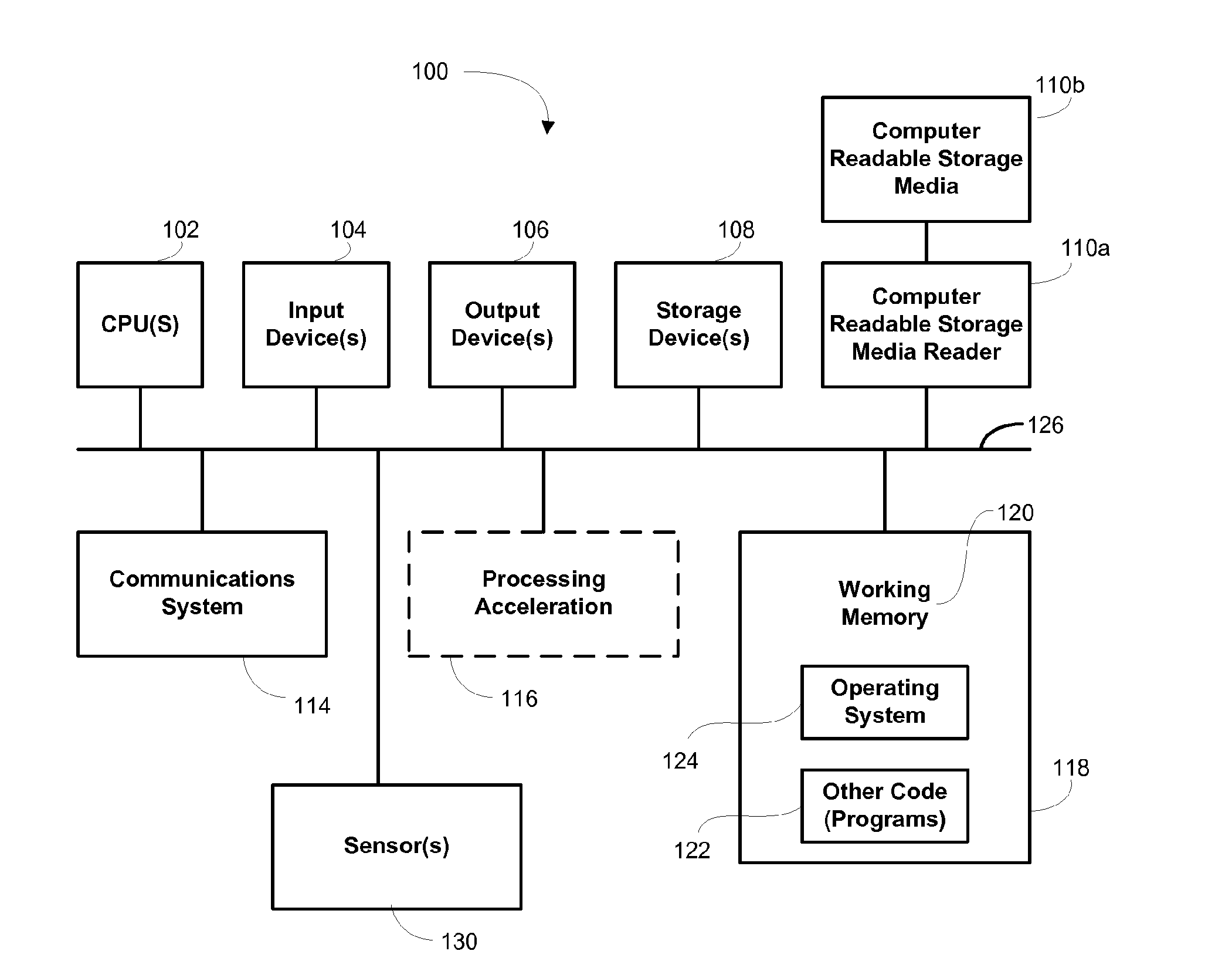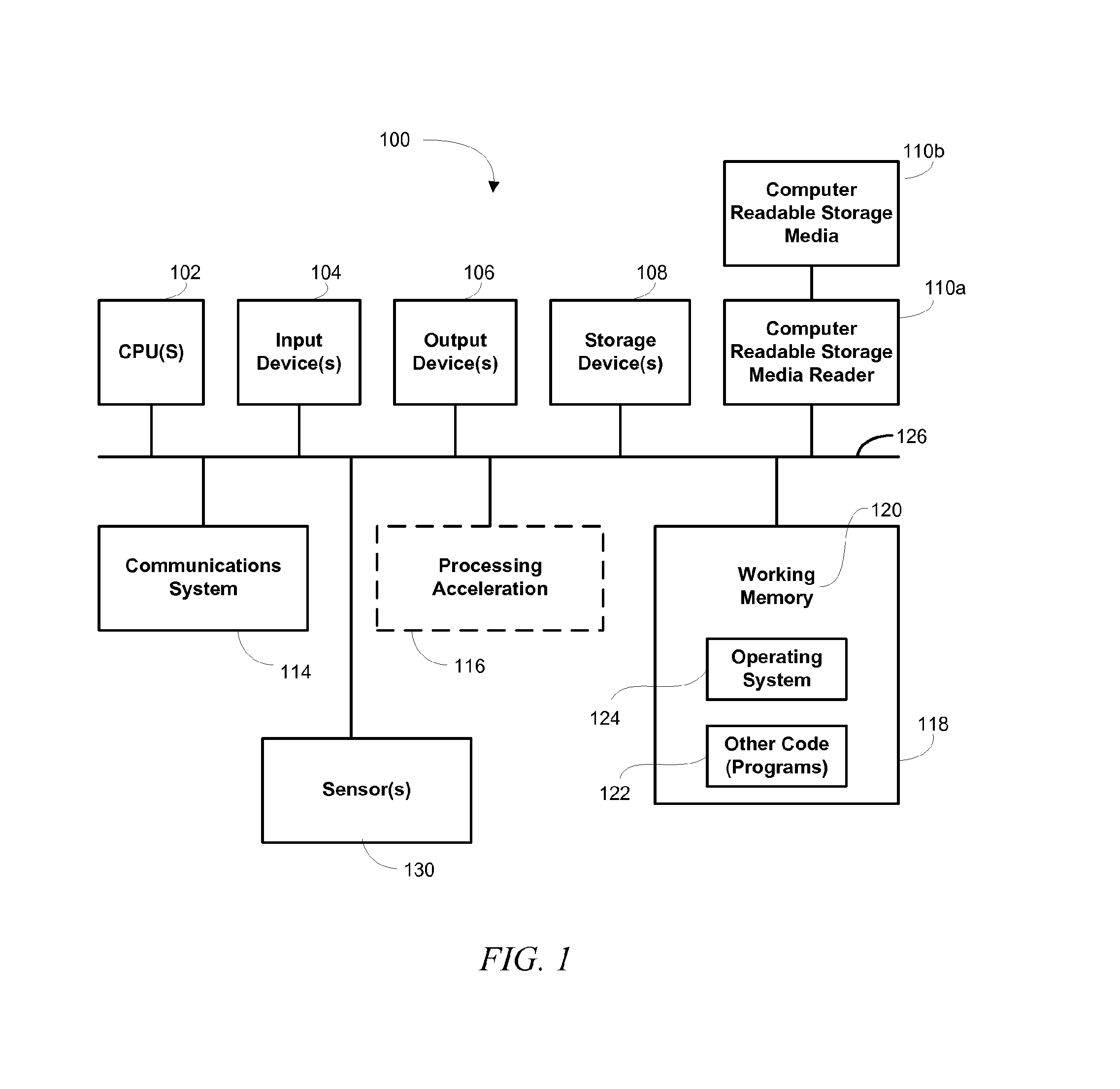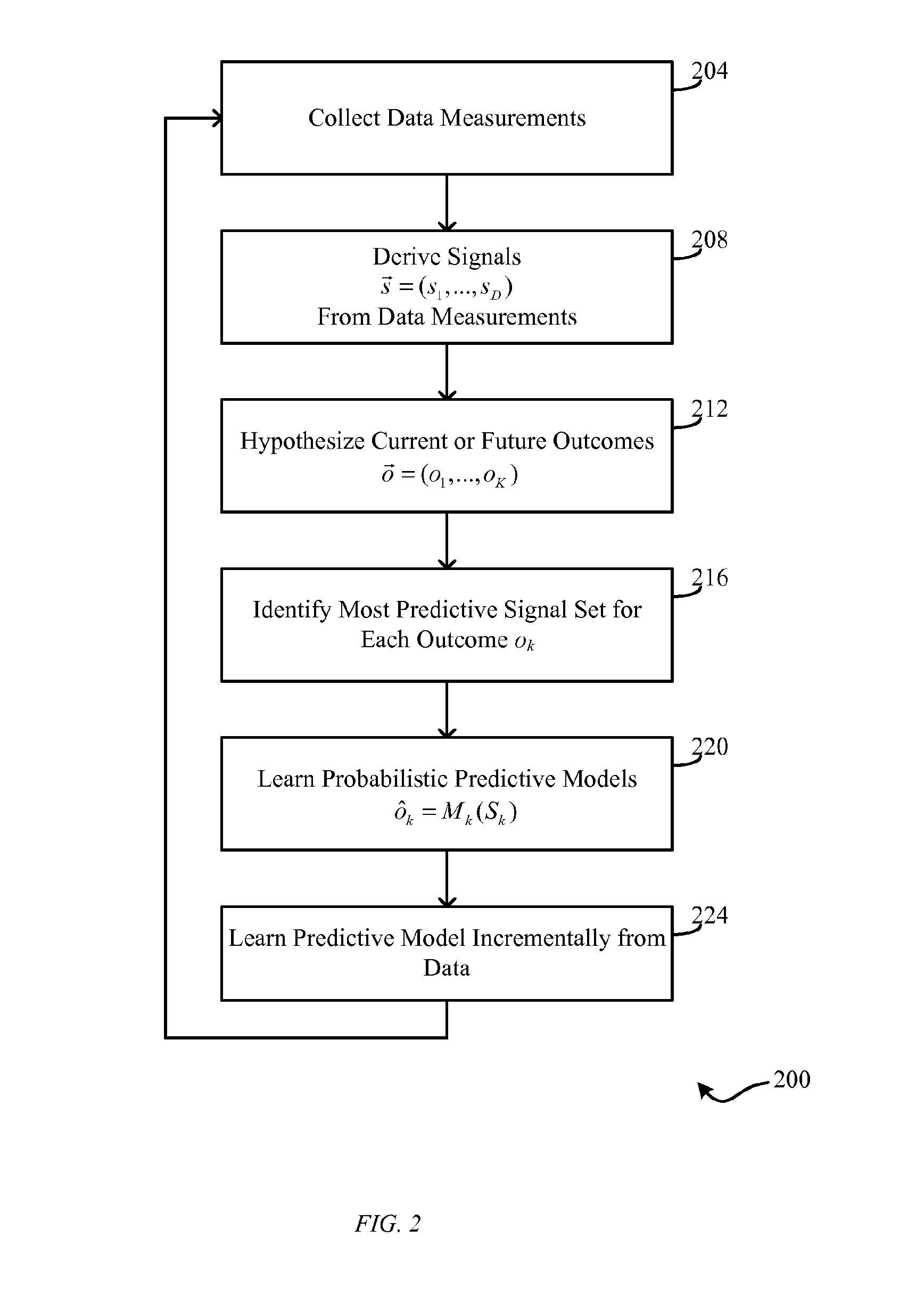Long Term Active Learning from Large Continually Changing Data Sets
a technology of continuous change and data sets, applied in the field of long-term active learning from large continuously changing data sets, can solve the problems of inability to describe or successfully implement continuously changing data for medical care, and inability to accurately predict the current and future state of a patient. , to achieve the effect of high speed, accurate decision-making and high accuracy
- Summary
- Abstract
- Description
- Claims
- Application Information
AI Technical Summary
Benefits of technology
Problems solved by technology
Method used
Image
Examples
Embodiment Construction
[0042]Embodiments of the invention provide methods and systems for autonomously building predictive models of current and future outcomes using large amounts of possibly complex, continually changing, incrementally available data. A general predictive model is disclosed followed by specific augmentation to the predictive model in specific applications. Prior to describing the predictive model, an example of a computational device is disclosed that can be used to implement various embodiments of the invention. Following the description of the predictive model, specific embodiments are disclosed implementing the predictive model in various aspects.
[0043]Embodiments of the invention provide methods and systems for autonomously building predictive models of current and future outcomes, using large amounts of possibly complex, continually changing, incrementally available data. Such embodiments find application in a diverse range of applications. Merely by way of illustration, some exemp...
PUM
 Login to View More
Login to View More Abstract
Description
Claims
Application Information
 Login to View More
Login to View More - R&D
- Intellectual Property
- Life Sciences
- Materials
- Tech Scout
- Unparalleled Data Quality
- Higher Quality Content
- 60% Fewer Hallucinations
Browse by: Latest US Patents, China's latest patents, Technical Efficacy Thesaurus, Application Domain, Technology Topic, Popular Technical Reports.
© 2025 PatSnap. All rights reserved.Legal|Privacy policy|Modern Slavery Act Transparency Statement|Sitemap|About US| Contact US: help@patsnap.com



